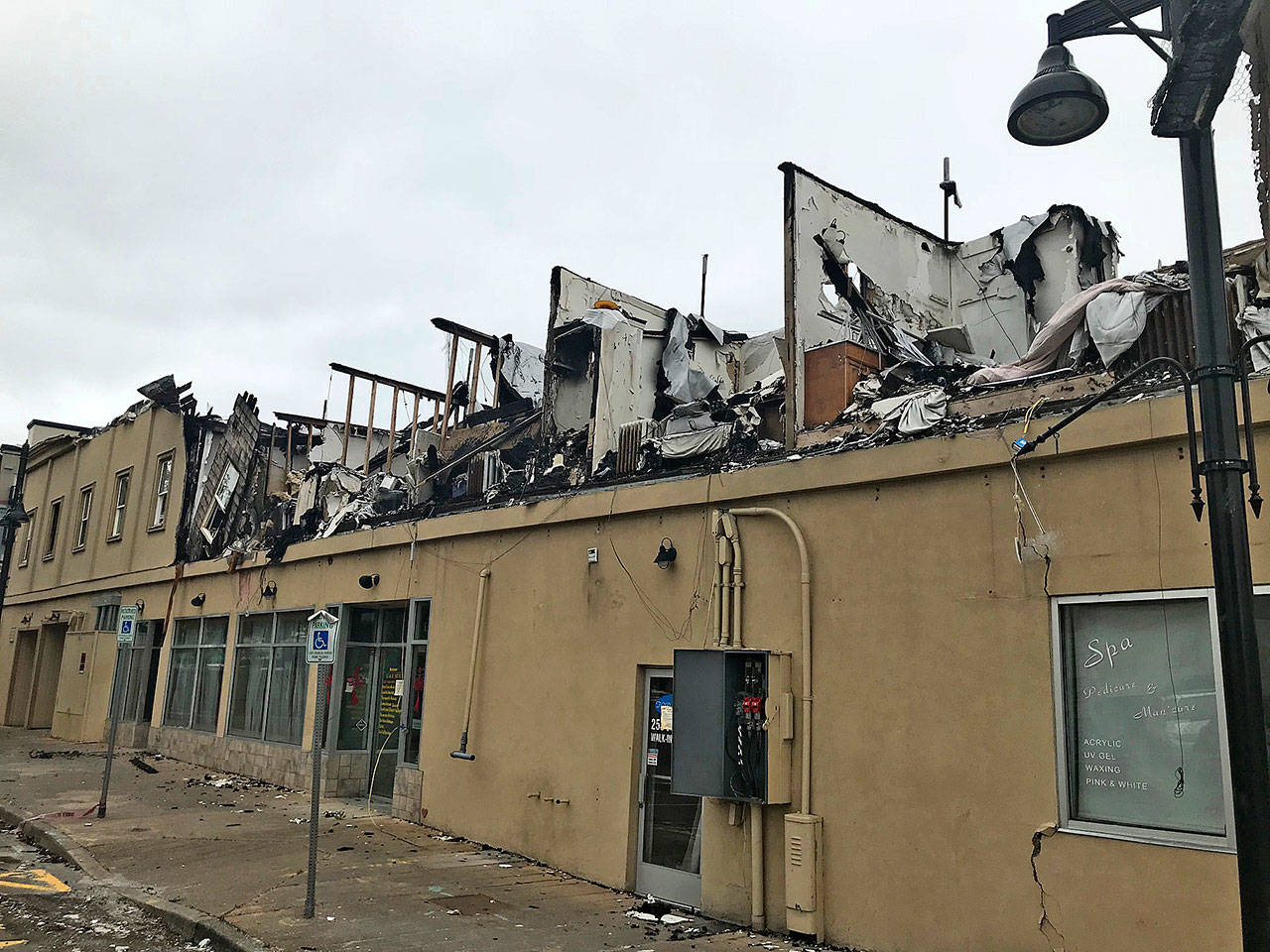A contractor working for the owner of the fire-damaged Heritage Building on Auburn’s East Main Street has applied to the City of Auburn for demolition permits.
Jason Krum, building official for the City of Auburn, said Tuesday morning the City has yet to issue the first permit to Harbro Emergency Services and Restoration for asbestos removal, or the second, for actual demolition.
Krum said the first of two contractors owner Melina Lin hired to look at her building recently completed tests and issued an asbestos report, which indicated the presence of asbestos-carrying materials that would have to be removed before the building was torn down.
The second contractor, Harbro, is now at work to confirm the report, and then devise a plan for an initial demolition phase to complete the required asbestos abatement.
“There will actually be several permits involved because there will be a lot of utility work to isolate the utility connections to the building,” Krum said. “There’ll also be a construction permit for some excavation work in the public right of way. They’ve just applied, really, for that first and second demo phase and one water utility permit to have the water meter removed and their water service disconnected.”
“The reason demolition is in two phases is because the asbestos part they can get going almost right away. It’s delicate work; it’s surgical, and it’s labor intensive,” said Jeff Tate, interim planning director for the City of Auburn. “You go into the building and start removing the pipes that have asbestos coating on them, and you bag them up and bring them out of the building. They’re almost ready to go on that right now.
“The building demolition is more complex. There’s more moving parts to it about getting heavy equipment across the public sidewalks and making sure the street lights are down because they are so close to the building,” Tate said. “There’s just a bunch of logistical things they have to do for the building demolition. We said, ‘Why not split it in two so you can start the asbestos removal while they are arranging the other things?”
Lin has already listed the property for sale but did not respond to a request for comment.
On Dec. 26, 2017, fire broke out in the building’s laundry room.
By the time the Valley Regional Fire Authority and other local fire agencies called in to help had extinguished the fire, the second floor of the nearly 100-year-old building was gutted, and its occupants and all of the ground-floor businesses were homeless.
Most of the occupants have since found new housing, and some of the businesses, like Top Nails, have set up shop elsewhere.
But Dec. 26 was also the day a critical clock started to tick for Lin — her window of time to rebuild the structure as the two-story building it was, Tate recently told the Auburn Reporter.
Lin had been working with her insurance company to try to settle on an amount, with no assurance the settlement would have provided the money she needed to rebuild.
A big problem: according to the City’s codes, she could not simply remove the second floor, clean things up and reopen the structure as a one-story building.
Auburn’s city code is clear about the downtown area. Typically, the ground floor is commercial, and the upper stories are residential or office space. But two stories is the minimum in the downtown, although a building’s height can reach as high as seven stories.
Lin was said as recently as the first week of May still to be exploring all of her options, all of which presented a wide range of costs and complexities.
One option would have been simply to raze the building to the ground, then recreate the two-story structure she had.
Another was to demolish the building, and leave.
Or she could have just demolished the structure and built anew, up to seven stories high.
But parking, of which the building has none, as it was put up before parking was required, probably would have made the last option untenable.


